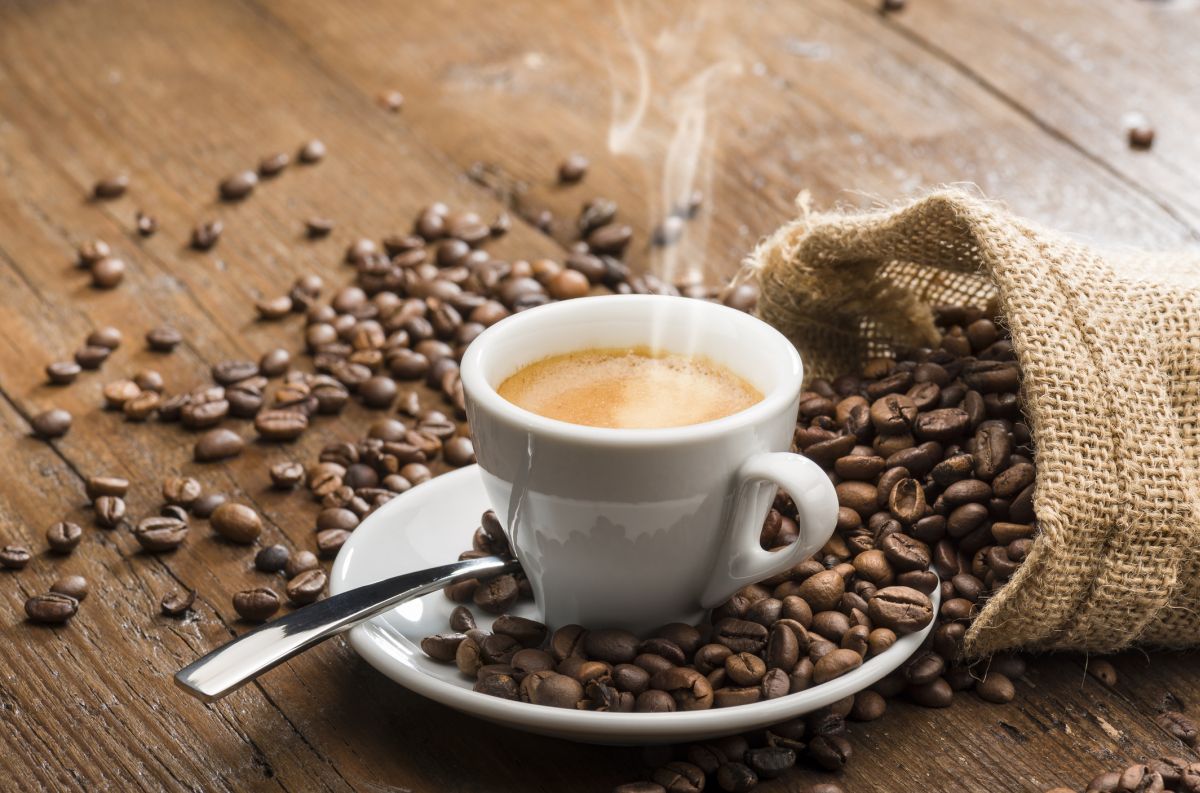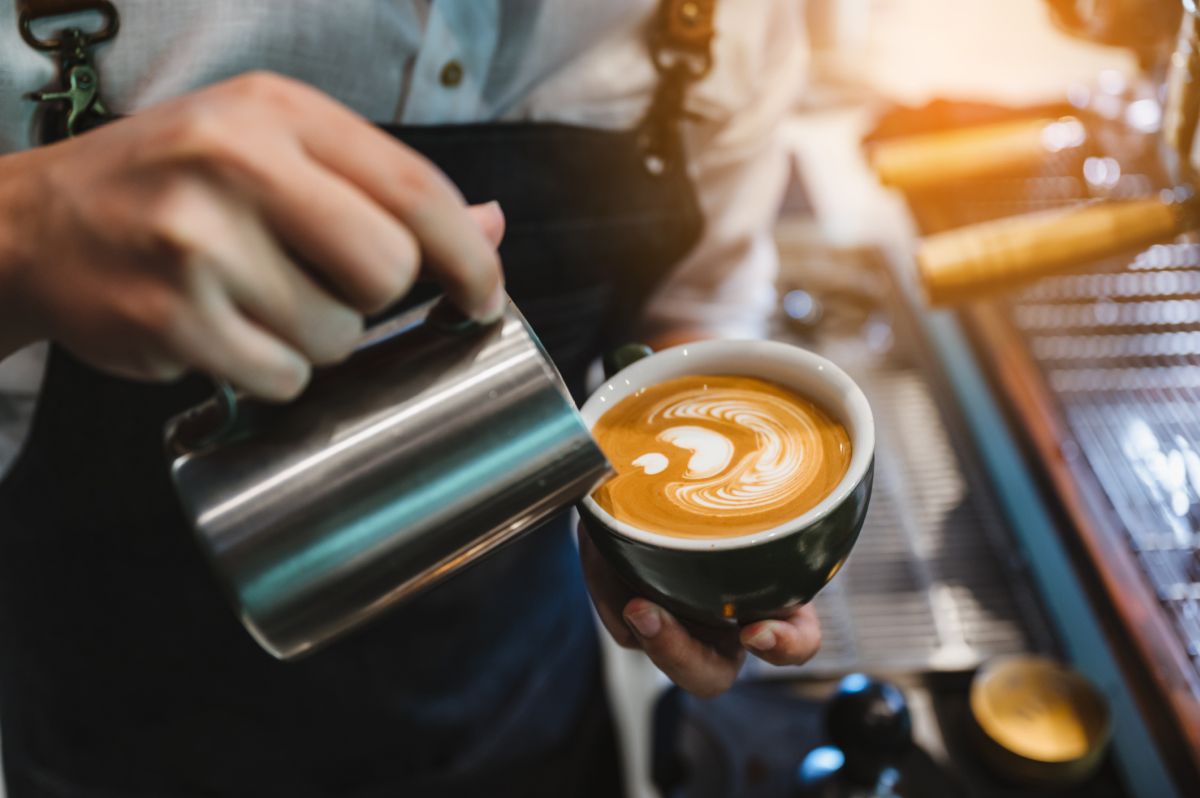When looking at the difference between coffee vs. espresso, the main distinction comes down to how they’re made. Ultimately, espresso is coffee.
What is Coffee?
Coffee is a brewed beverage that is made from roasting coffee beans from a tropical evergreen coffee plant. Due to its caffeine content, coffee can have stimulating effects, such as boosting energy levels and fine-tuning your focus.
Health Benefits of Drinking Coffee
- Coffee can boost energy levels as it is a central nervous system stimulant. Caffeine can decrease fatigue as it can alter levels of certain neurotransmitters in the brain.
- Some studies suggest that coffee help fight against specific neurodegenerative disorders, such as Alzheimer’s disease and Parkinson’s disease. Over time, caffeine consumption can slow the progression of Parkinson’s as well as lowering the risk of Alzheimer’s disease.
- Some research indicates that drinking coffee can be beneficial to heart health. Drinking coffee can be linked to lower risks of heart disease, stroke, and heart failure.
- According to some research, coffee may promote weight management. Some studies suggest that coffee can alter fat storage and support gut health.
- Coffee has been linked to a lower risk of depression. Some studies have linked together that each cup of coffee a person drinks per day can lower the risk of depression by 8%.
- There are several studies that suggest coffee supports liver health and protects against liver conditions. Coffee consumption can lead to a decreased risk of death from chronic liver disease, liver scarring, and liver cancer.
Coffee Health Risks
- For some, coffee consumption can lead to iron deficiency anemia due to the polyphenols coffee contains. This can be found in mothers and infants.
- Some studies suggest that caffeine in coffee can lead to the stiffening of arterial walls, but this can also be temporary.
- Elderly individuals can have a harder time tolerating caffeine because of their depleted enzymatic system.
- If someone has a pre-existing anxiety disorder, this anxiety can be heightened when someone drinks coffee, especially in high doses.
- Some studies show that when someone consumes four or more cups of coffee a day, this can lead to someone experiencing headaches.
- Someone can experience irritability, insomnia, and an irregular and rapid heart due to excessive coffee drinking. Coffee can also aggravate migraines, and arrhythmias, cause sleep disturbances, and other pre-existing conditions.
What is Espresso?
Espresso is a strong coffee that is made by the high pressure of forcing hot water through finely-ground beans to end up with a small, concentrated shot.
Health Benefits of Drinking Espresso
Increases cognitive performance
Some studies show that drinking espresso can increase cognitive performance by making someone feel more alert, aware, and energetic. This is because of how caffeine stimulates the nervous system.
Enhances Your Exercise Routine
For some, drinking coffee can enhance someone’s exercise ability. This includes increasing endurance, strength, and power.
Potential Espresso Health Risks
- Some studies show that unfiltered coffee can hinder heart health. Drinking unfiltered coffee can increase someone’s chance of dying from stroke, heart disease, or ischemic heart disease.
- Consuming espresso can cause gastrointestinal issues. Since caffeine stimulates your GI tract, some people may experience gastrointestinal distress or exacerbate symptoms of gastroesophageal reflux disease or irritable bowel syndrome.
Key Differences: Coffee vs. Espresso
Roasting
The roast of espresso is dark, while the roast for coffee can be dark, medium, or light.
Grind Size
The grind size of coffee grounds is medium-coarse, whereas, espresso grind size is very fine.
Extraction
The extraction of coffee and espresso makes a clear distinction between the two. For espresso, extraction is done by using pressurized water. For coffee, extraction is done by using gravity or a filter.
Crema
You can find crema at the top of an espresso, which is not found in coffee. Several interactions take place when pressurized water is forced through a coffee cake. These include:
- Coffee oils blend with hot water.
- The carbon dioxide that is trapped in the roasting process is released after being exposed to pressure. This pressure degasses the bean.
- Specific ions called bicarbonate ions found in the water undergo a chemical reaction due to the evolving pH of the coffee cake.
These processes lead to the creation of the top layer of the exposure shot known as crema. This layer can last for about 40 minutes. There isn’t any crema in coffee on the other hand.
Coffee vs. Espresso Serving Size
The serving size of an espresso is quite smaller than a typical cup of coffee. The average size of a single cup of coffee is 8 ounces, whereas expresso shots tend to be only one ounce.
Brewing Method
The brewing method differentiates coffee and espresso. To make espresso, you use an espresso machine to pressurize and shoot near-boiling water through finely-ground coffee beans. This process can give you a caffeine-packed shot of coffee in under 30 seconds. Brewing coffee is a more time-consuming process that can take a few minutes. The process relies on slowly filtering hot water through coffee grounds.
Taste
The taste of coffee is less intense or not as strong compared to espresso. Espresso has a much bolder or stronger taste. This is due to how espresso is not made using a filter which leads to no flavor-filled oils.
How to Make A Coffee
There are many different ways to make coffee, but drip methods tend to be the most popular. You can add medium-ground coffee to a filter that is placed into a container, then slowly pour hot water over the grounds.
Types of Drinks You Can Make With Coffee
- Cold brew
- Iced coffee
- Café Au Lait, which is made by taking coffee and then adding steamed milk.
- Irish Coffee, which is a caffeinated alcoholic drink that consists of irish whiskey, hot water, and sugar.
- Frappuccino, or a frozen coffee drink, that is made by blending coffee, ice, and other ingredients, such as flavors, syrups, spices, and whipped cream.
How to Make A Espresso
To make espresso at home, you can use an espresso machine, a portable espresso maker, a French press, a moka pot, or an Aeropress.
To make an espresso using an espresso machine, you first need to ground the coffee until it’s very finely ground. Make sure to pay attention to different roasts and brands of beans as different roasts or beans can require a different grind.
Next, pack and tamp the grounds by adding the coffee grounds to an espresso basket. You then use the tamper to press the grounds evenly into the portafilter.
After tamping the grounds, pull the shot by placing the portafilter in the espresso machine and pressing the button to pull the shot. If the espresso is well-pulled, the shot should last around 25 to 30 seconds.
Types of Drinks You Can Make With Espresso
- An Americano is a combination of espresso and water that can be either hot or cold. Typically, there is more water in an Americano compared to espresso.
- A flat white is a combination of espresso, steamed milk, and a layer of foam on the top. This layer of foam is thinner than the foam on top of a latte or cappuccino.
- A latte is a combination of espresso, steamed milk, and a layer of foam on top. ⅓ of the drink is espresso, and ⅔ of the drink is steamed milk.
- A cappuccino is a combination of steamed milk, espresso, and foam with equal proportions.
- A macchiato is an espresso with a spoonful of frothed milk on top.
Which Drink Has More Caffeine: Coffee vs. Espresso?
The amount of caffeine in espresso and coffee comes down to how each one is brewed. Espresso has more caffeine per ounce than coffee, whereas coffee has more caffeine in a typical serving.
It’s more important to look at how much coffee or espresso you are drinking in one sitting to accurately know which has more caffeine. Usually, a prepared coffee drink often will have more caffeine than an espresso drink.
Which is The Healthier Choice: Coffee vs. Espresso?
Both coffee and espresso can contribute to your health if they are consumed responsibly. Coffee and espresso contain bio-actives that can support overall longevity and support heart health, metabolic health, and cognitive function.
With this said light-roast coffee tends to have a higher concentration of beneficial plant compounds when compared to espresso.


Leave a Reply